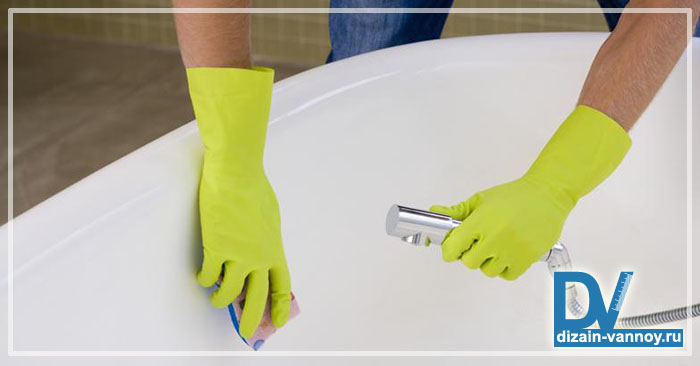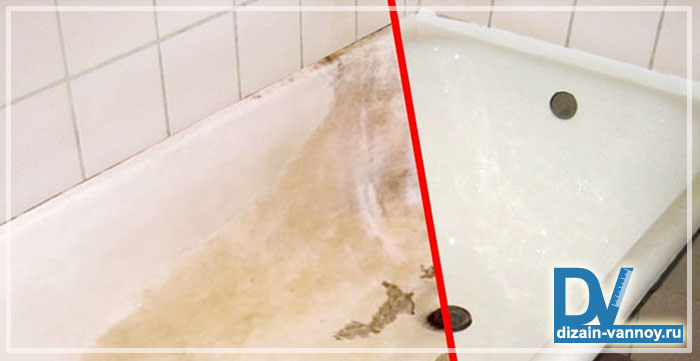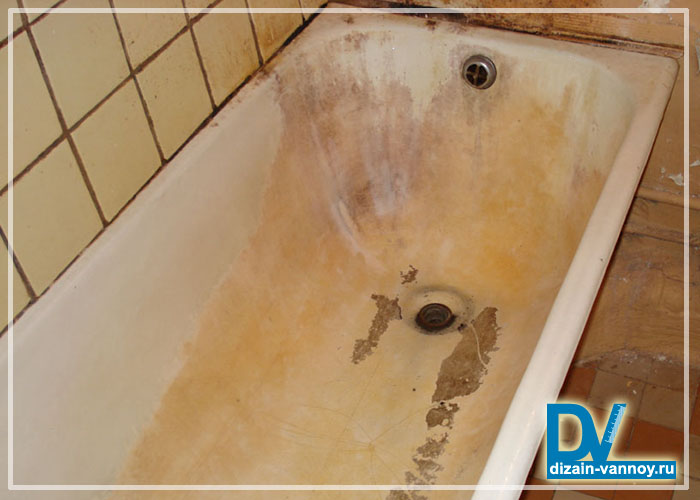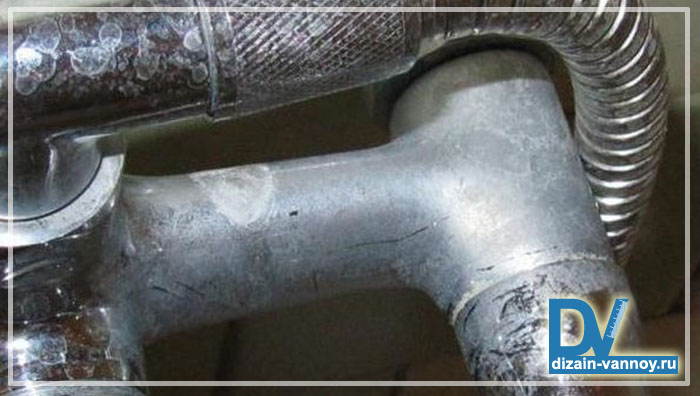How to remove limescale in the bathroom?
The bathroom is the most important place in the house, where it is pleasant for adults to relax and unwind after a working day, and for kids to play and frolic in the water with their favorite toys. Therefore, any hostess tries to keep it clean. But due to the high salt content in the water of many regions of our country, many housewives are faced with the problem of how to remove limescale in the bathroom.
Everyone wants to take water procedures in comfort, and if there are small children in the house, maintaining cleanliness is simply necessary. Therefore, noticing such a nuisance, the question immediately arises: “how to wash the bath from plaque?”. Of course, the most common way is to clean the contaminated surface with some kind of powder (Comet, PemoLux, etc.), but there is a high probability that, with a lot of effort and not achieving the desired effect, damage the coating. Therefore, the remedy for plaque in the bathroom must be chosen depending on its material.
Bathroom cleaners
In general, bathroom cleaners can be divided into 2 types:
- Folk (vinegar, citric acid);
- Chemical (special creams and gels for removing limescale, acid-containing products).
Acrylic Bathtub Cleaning
The most important rule for cleaning acrylic surfaces: do not use abrasive products. They lead to the appearance of scratches in which dirt accumulates and spoils the appearance of the product. The safest and cheapest way to clean a bathtub is to use citric acid:
- Before you clean the bath from plaque, you must first remove dirt and grease from it using ordinary liquid soap;
- We take a large soft sponge, a small basin or other container with a volume of 2-2.5 liters;
- Pour 2 sachets of citric acid into the container, add a liter of water and stir until completely dissolved;
- Using a sponge, rub the surface with the resulting solution, leave for 15-20 minutes;
- We repeat the procedure, paying special attention to the surface near the drain. We rinse the bath well with plenty of water using a shower hose and enjoy the snow-white bath.
Important: before cleaning the bath from plaque, rubber gloves must be worn to protect the skin from acid exposure.

An alternative to citric acid can be table vinegar:
- We fill the bath with cold water (up to 30 degrees);
- Pour half a liter of vinegar (7% or 9%) and leave for at least 3 hours, ideal for the night;
- Drain the water-vinegar solution, rinse well with running water and wipe the surface dry.
Cleaning cast iron and enamelled steel baths

It is always easier than cleaning plaque in an acrylic bath, as it does not require such careful treatment.
If the limescale contamination is not strong, the bathtub can be cleaned from plaque using an ordinary dishwashing detergent (in principle, this method is also suitable for acrylic). To do this, apply a small amount of the product to the surface and wipe it off with a sponge (in places where plaque is difficult to remove, you can use the reverse hard side of the sponge, but only for enameled surfaces!).
Tip: For more serious pollution, special products are needed, which include anti-corrosion inhibitors. These substances allow you to wash off plaque without destroying the coating of the bath. Cheap products that do not contain inhibitors allow you to get the expected effect, however, together with plaque, they remove a small layer of the coating, which subsequently leads to faster contamination and loss of the original appearance of the product.

If the contamination is severe, such a task as cleaning the bath of plaque can be difficult and requires the involvement of heavy artillery. In the case when all attempts to clean the surface in more gentle ways have failed and there is simply nothing to lose, you can use toilet bowl cleaners containing sulfuric acid:
- Fill the bath with cleaning gel so that it covers the surface evenly, and leave for 20-30 minutes;
- When the acid does its job and eats away the limestone, we take a sponge and clean it with light movements;
- Rinse very thoroughly with cool water and admire the result.
Before you clean the plaque in the bathroom with aggressive acid-containing products, you need to take care of your safety by protecting your hands with gloves and your airways with a respirator. It is necessary to work with such means very carefully so that they do not get on the mucous membrane of the eyes and other organs.
Cleaning the bathroom from plaque

Removing limescale in the bathroom is not limited to cleaning the bathtub itself. Lime deposits often appear on glass shelves, faucets and tiles. You can clean these surfaces in the same way as you clean the bath from plaque:
- Glass shelves and partitions are well washed with a solution of citric acid;
- Tiles can be cleaned with table vinegar (6%) by spraying it on the surface and rubbing it with a brush or the hard side of a sponge;
- Vinegar is also suitable for sanitary faience: we heat a glass of vinegar (6% or 9%), pour it into the toilet bowl or sink (closed with a cork) and leave it overnight. Then you just need to wash off the solution;
- Metal surfaces such as faucets should be cleaned well with a light solution of citric acid (1 pack per 0.5-0.75 liters of water).
In addition to lime, black plaque is often found in the bathroom. This is indicative of mold. Everyone wants to know how to remove the plaque in the bathroom, which appeared due to the development of the fungus and at the same time get rid of it forever. To do this, do the following:
- Clean the areas affected by the fungus. If it is the bath itself or the tile, such products as Whiteness, Chlorox and other chlorine-containing products will help. If mold has started on silicone, there is only one way out - to remove the old affected one and replace it with a new one. The plastic ceiling must also be replaced, however, if the plaque has not yet had time to eat in, it can be removed with a sponge and bleach, and then treated with a special antiseptic;
- In order to avoid the reappearance of black plaque, it is necessary to reduce the humidity in the room. If a conventional vent does not cope with this task, it is necessary to install a forced fan, which can be turned on after taking water procedures or made so that it turns on along with the lighting;
- Until the issue with the installation of ventilation is resolved, it is necessary to ensure that the door to the bathroom is always open.
Prevention of pollution in the bathroom
In order to avoid the question of how to properly remove limescale in the bathroom, the following measures must be taken:
- After each use of the bath, it is necessary to rinse it with cool water and wash it at least 2 times a week with ordinary liquid soap;
- To soak things, it is necessary to use special containers; in no case should a bath be used for these purposes;
- To improve the quality of water, it is desirable to install a system of purification filters and water softeners. This will reduce salt deposits, improving not only the aesthetic appearance of the bathroom, but also the functional state of plumbing (hoses, taps, etc.) and household appliances (washing machine and dishwasher).
Of course, keeping clean and constantly maintaining it is easier than removing plaque in the bathroom, which has already eaten in and requires serious measures. This process takes a lot of effort, time, and sometimes money, so it is better not to neglect the above preventive measures.






